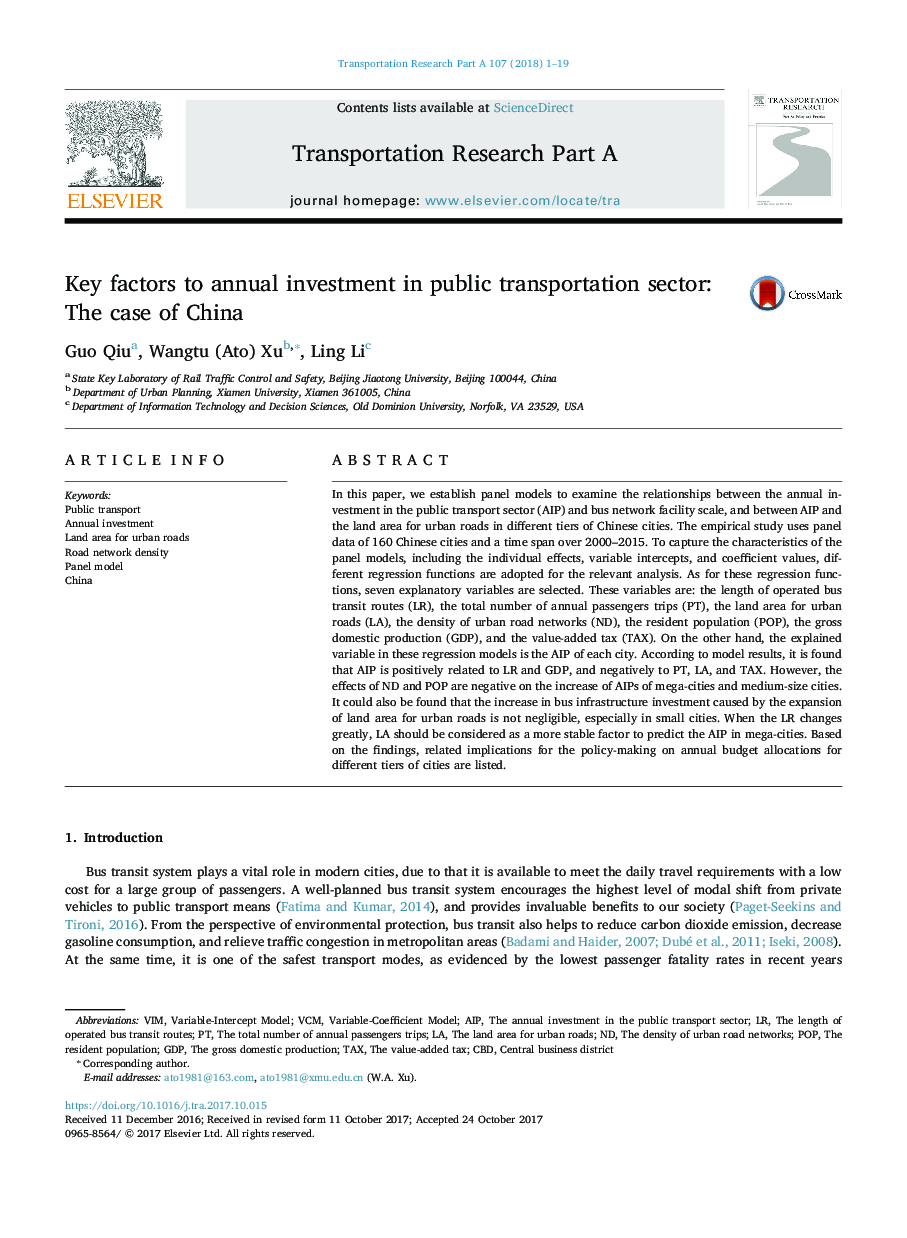| Article ID | Journal | Published Year | Pages | File Type |
|---|---|---|---|---|
| 6780526 | Transportation Research Part A: Policy and Practice | 2018 | 19 Pages |
Abstract
In this paper, we establish panel models to examine the relationships between the annual investment in the public transport sector (AIP) and bus network facility scale, and between AIP and the land area for urban roads in different tiers of Chinese cities. The empirical study uses panel data of 160 Chinese cities and a time span over 2000-2015. To capture the characteristics of the panel models, including the individual effects, variable intercepts, and coefficient values, different regression functions are adopted for the relevant analysis. As for these regression functions, seven explanatory variables are selected. These variables are: the length of operated bus transit routes (LR), the total number of annual passengers trips (PT), the land area for urban roads (LA), the density of urban road networks (ND), the resident population (POP), the gross domestic production (GDP), and the value-added tax (TAX). On the other hand, the explained variable in these regression models is the AIP of each city. According to model results, it is found that AIP is positively related to LR and GDP, and negatively to PT, LA, and TAX. However, the effects of ND and POP are negative on the increase of AIPs of mega-cities and medium-size cities. It could also be found that the increase in bus infrastructure investment caused by the expansion of land area for urban roads is not negligible, especially in small cities. When the LR changes greatly, LA should be considered as a more stable factor to predict the AIP in mega-cities. Based on the findings, related implications for the policy-making on annual budget allocations for different tiers of cities are listed.
Related Topics
Physical Sciences and Engineering
Engineering
Civil and Structural Engineering
Authors
Guo Qiu, Wangtu (Ato) Xu, Ling Li,
